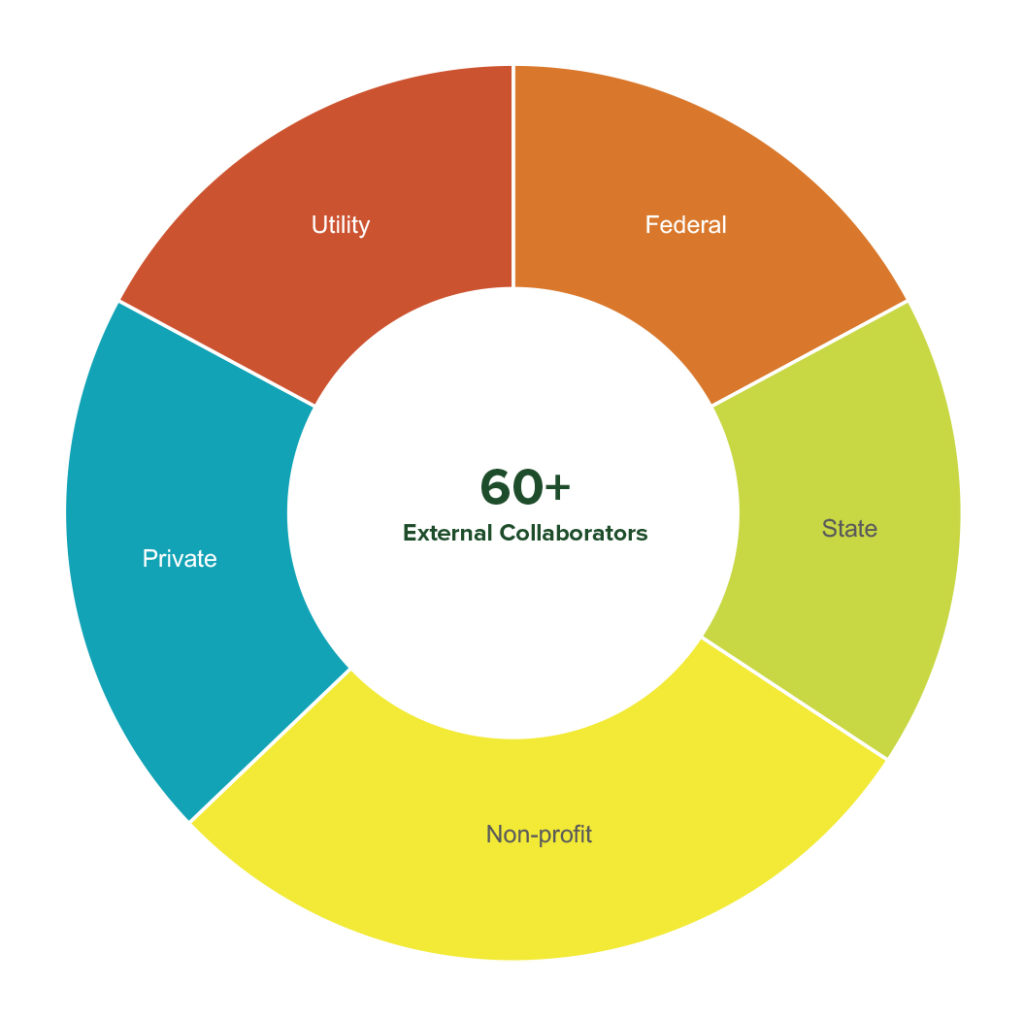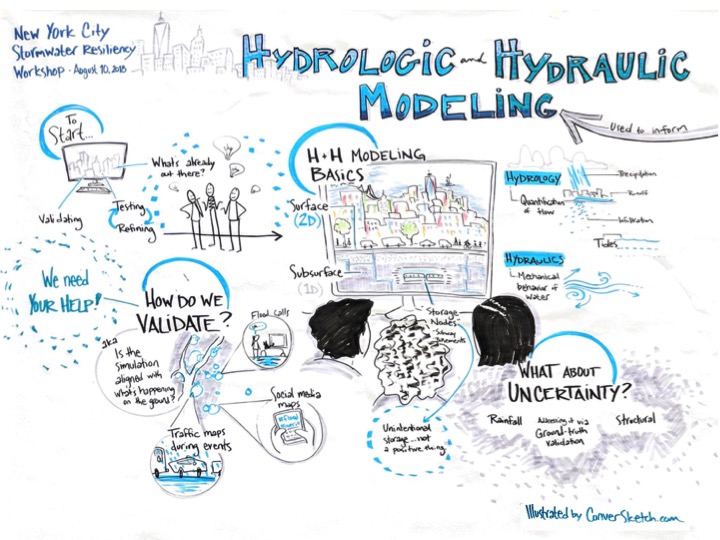
When Jennifer Cherrier put together a proposal for a $1.8 million New York City stormwater resiliency study, she knew she needed to work with Colorado State University Professor Mazdak Arabi and the One Water Solutions Institute to do the job right and get it done on time. The team they assembled completed the largest stormwater management modeling exercise ever, and they did it within one year.
“To the best of my knowledge, nothing like this had ever been done before,” said Cherrier, a professor in the Department of Earth and Environmental Sciences at Brooklyn College-CUNY and principal investigator on the project. “I immediately knew I had to partner with Mazdak and his team because of their collective expertise, Mazdak’s aligned vision of generating actionable science and the short turn-around time to complete the project.”
Cherrier believed in their team from the start, even though they were competing against some big consulting agencies and well-known private institutions. The city funded their proposal, and they delivered a 750-page technical report with maps and models detailing flood risks from current and future extreme rain events, along with potential interventions. They also developed a data-visualization platform for use in decision-making.
“The city’s trying to understand how their infrastructure is responsive to chronic and acute storms, and they’re trying to figure out what they need to do to be more resilient,” said Cherrier.
The collaboration’s goal was to provide science the city could use to make decisions, and they are pleased their results are being put to good use.
“The city is using the models we developed to try to make more informed decisions,” Cherrier said. “We didn’t want to come into this project to do an academic exercise; we really wanted to provide these useful tools that the city could use.”
Providing useful tools is an important focus of the One Water Solutions Institute (OWSI), a hub for interdisciplinary labs and research centers at CSU, directed by Arabi. The institute brings together diverse researchers from across campus and employs students and staff to solve water-related problems.

“The core mission we want to achieve is to help stakeholders and citizens to be able to leverage this world-class expertise we have to solve real-world problems,” Arabi said.
A lasting partnership
Thousands of users utilize the tools developed by the One Water Solutions Institute. The institute has worked with utilities, consultants, non-government organizations, nonprofits, and federal and state agencies. One of those agencies, the Colorado Department of Public Health and Environment, has partnered with Arabi and the institute on projects for nearly 10 years.
The collaboration is a natural fit, considering the department and the institute share common goals, explained Kenan Diker, an agricultural water quality specialist with CDPHE’s Water Quality Control Division. Both entities aim for the protection and restoration of water quality in Colorado, research on sustainability challenges to water resources, water resource planning and agricultural resource management.
To achieve the division’s goals, CDPHE relies on data, planning and data analysis, Diker said. “OWSI has been providing essential support to the division in those areas.”
One example is the Watershed Rapid Assessment Program, a repository of water quality and environmental data from various state and federal sources, and a summary of data at various watershed scales. The WRAP tool consolidates datasets for other dashboards and analytical tools that are built on it.

Another tool the institute developed for CDPHE is the Non-Point Source Priority Dashboard, to assist the division in prioritizing watersheds for conservation, restoration and preservation. It allows users to create customized scenarios and identify priority watersheds in a specified region.
The tools OWSI has developed for CDPHE are Web-based and platform-independent, making them easily accessible.
“The division is always looking to improve its water quality management through user-friendly tools and data management systems,” Diker said. “That is where OWSI comes into the picture by providing easy access to the data and scientifically dependable analytical tools developed specifically for the division and stakeholders’ needs.”
Diker also appreciates the outreach and education the institute offers for the tools they develop, as well as customer service and maintenance when needed.
“The division believes that OWSI provides valuable services to the division and its stakeholders, so we’re committed to furthering this relationship,” he said.
A model to emulate
The One Water Solutions Institute and their collaborators have caught the attention of others hoping to duplicate their successful pairing of entrepreneurial spirit and academic knowledge.
“What we did here in New York City with this project is a model that other cities, like the city of Philadelphia, are now trying to follow in how to effectively engage with academia, because it can be a really powerful collaboration, if done right,” Cherrier said.
Cherrier commended the work done by Arabi and the OWSI team for the stormwater resiliency study and their ability to be nimble and responsive to the project goals.
“There was really no way the whole project could have been funded had Mazdak and his team not been part of it, and it wouldn’t have gotten completed if Mazdak and his team were not on it,” she said. “They have a dynamic team there, and the work they did on this project was really eloquent. I definitely look forward to working with Mazdak’s team in the future on other projects.”